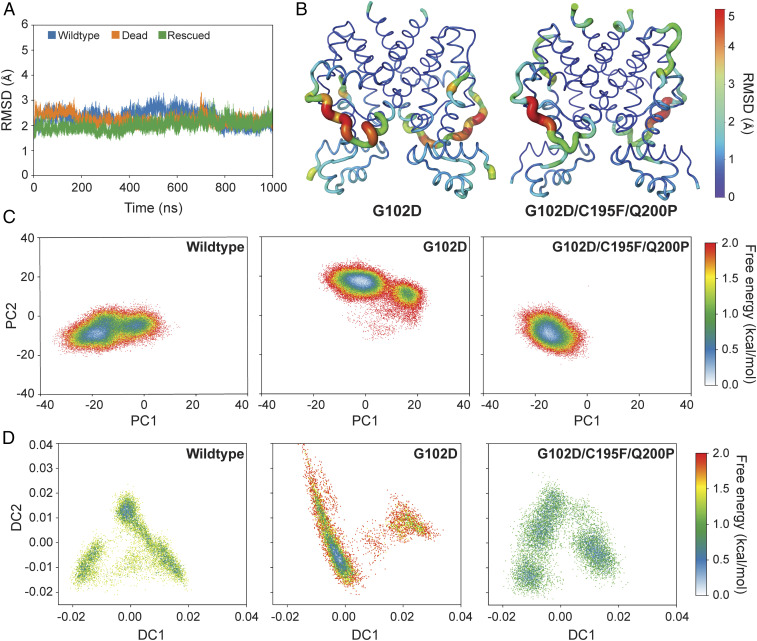Fig. 4.
Free energy landscapes of wildtype, dead, and rescued mutants consistent with function. (A) Backbone RMSDs of wildtype TetR, dead (G102D), and rescued (G102D/C195F/Q200P) variants over time shows stable structures. (B) Average structures of dead and rescued variants over the last 800 ns of simulation. Thickness of ribbon and color scale reflect RMSD per residue relative to average wildtype TetR structure over this time window. (C) Two-dimensional free energy landscapes projected onto first and second principal components show strong similar conformational distributions of wildtype and rescued variant, but distinct from dead variant. (D) Two-dimensional free energy landscapes from the locally scaled diffusion map analysis of wildtype, dead, and rescued variants also observe similar conformational distributions for the wildtype and rescued variant, with the dead variant being distinct.

